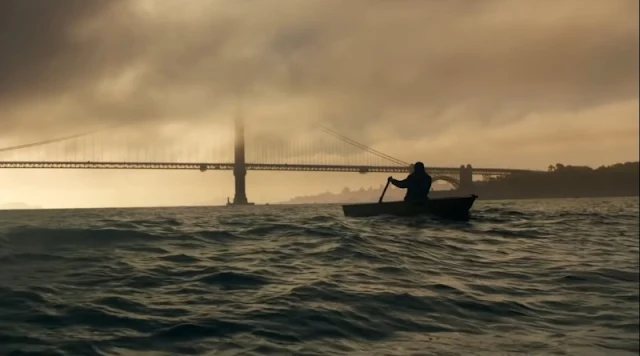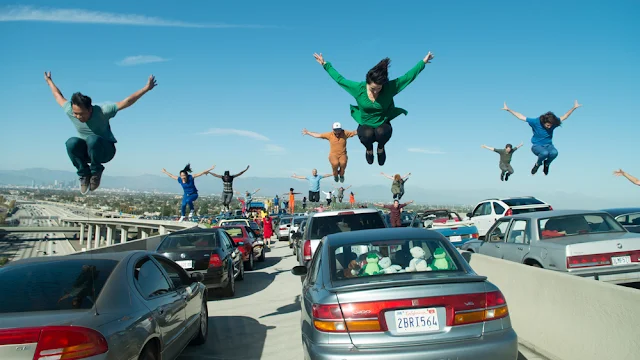A blog formerly known as Bookishness / By Charles Matthews
"Dazzled by so many and such marvelous inventions, the people of Macondo ... became indignant over the living images that the prosperous merchant Bruno Crespi projected in the theater with the lion-head ticket windows, for a character who had died and was buried in one film and for whose misfortune tears had been shed would reappear alive and transformed into an Arab in the next one. The audience, who had paid two cents apiece to share the difficulties of the actors, would not tolerate that outlandish fraud and they broke up the seats. The mayor, at the urging of Bruno Crespi, explained in a proclamation that the cinema was a machine of illusions that did not merit the emotional outbursts of the audience. With that discouraging explanation many ... decided not to return to the movies, considering that they already had too many troubles of their own to weep over the acted-out misfortunes of imaginary beings."--Gabriel García Márquez, One Hundred Years of Solitude
Search This Blog
Showing posts with label Finn Wittrock. Show all posts
Showing posts with label Finn Wittrock. Show all posts
Tuesday, February 4, 2020
The Last Black Man in San Francisco (Joe Talbot, 2019)
Cast: Jimmie Fails, Jonathan Majors, Rob Morgan, Tichina Arnold, Mike Epps, Finn Wittrock, Danny Glover, Willie Hen, Jamal Truelove. Screenplay: Joe Talbot, Jimmie Fails, Rob Richert. Cinematography: Adam Newport-Berra. Production design: Jona Tochet. Film editing: David Marks. Music: Emile Mosseri.
With Blindspotting (Carlos López Estrada, 2018) and Sorry to Bother You (Boots Riley, 2018), The Last Black Man in San Francisco forms a kind of trilogy of films about gentrification in the San Francisco Bay Area. The first two films are based in Oakland, but the center of gravity in the area is what people continue to call The City. Jimmie Fails (the character and the actor-writer have the same name) is obsessed with a Victorian house in which his family used to live, back when old houses were cheap and many of them were located in predominantly black neighborhoods. He has convinced himself somehow that the house was built in 1946 by his grandfather, who settled in San Francisco after the war, and that the decline of the family fortunes, brought about by his father's fecklessness, robbed him of his heritage. Jimmie now lives in the rundown Bayview-Hunters Point area of San Francisco, bunking with his friend Mont (Jonathan Majors) and Mont's blind grandfather (Danny Glover), but whenever he can he takes the bus or rides his skateboard to the old house and surreptitiously does what he can to keep it up whenever the elderly couple who live there are away. The more realistic Mont does what he can to dispel his friend's illusions, but when the residents move out and the house is held up because of conflicts over its ownership, Jimmie moves in and tries to claim ownership himself. Eventually, Jimmie is forced to confront reality. Meanwhile, Fails and writer-director Joe Talbot craft a loving but pained portrait of what San Francisco has become in an era of severe income disparity. The film is neither as pointed as Blindspotting nor as raucously satiric as Sorry to Bother You, but it accumulates its own special poignancy in its exploration of the racial and economic disjunctions of the 21st century.
Friday, December 15, 2017
La La Land (Damien Chazelle, 2016)
Sebastian Wilder: Ryan Gosling
Mia Dolan: Emma Stone
Keith: John Legend
Laura Wilder: Rosemarie DeWitt
Greg Earnest: Finn Wittrock
Bill: J.K. Simmons
David: Tom Everett Scott
Director: Damien Chazelle
Screenplay: Damien Chazelle
Cinematography: Linus Sandgren
Production design: David Wasco
Film editing: Tom Cross
Music: Justin Hurwitz
Choreography: Mandy Moore
La La Land is an homage to an homage, which may be why it works so well. The acknowledged inspiration of Jacques Demy's The Umbrellas of Cherbourg (1964) and The Young Girls of Rochefort (1967), tributes to the Hollywood musicals of Vincente Minnelli and Stanley Donen, helps give Damien Chazelle's film the right ironic distancing. Without the tinge of melancholy that informs Demy's hommages, La La Land could have been just another campy pastiche, tongue-in-cheek nostalgia for a movie era that will never return. Ryan Gosling and Emma Stone were dinged by some critics for not being Fred and Ginger or Gene and Judy, movie stars who could actually sing and dance. But that's very much the point: Just as Gosling's Sebastian wants to be a jazz musician in an age that "hates jazz" and Stone's Mia longs to star in movies like Casablanca (Michael Curtiz, 1952) and Notorious (Alfred Hitchcock, 1946), they are stuck in the musical and cinematic present. There are no record companies or film studios that would cherish and nurture their dreams. Sebastian's jazz club becomes a "salsa/tapas" joint and even the Los Angeles revival house where he and Mia meet to watch Rebel Without a Cause (Nicholas Ray, 1955) closes soon afterward. Chazelle delicately, deftly plays on the frustration of being born out of time, witnessing a past turned rosy by nostalgia-tinted glasses. In this context, the skillfully done "what might have been" montage at the film's end, in which Seb and Mia live out the happy ending to their love affair that might have capped a real 1950s movie musical, brings home the bittersweet message: You can't have your dreams and eat them, too.
Mia Dolan: Emma Stone
Keith: John Legend
Laura Wilder: Rosemarie DeWitt
Greg Earnest: Finn Wittrock
Bill: J.K. Simmons
David: Tom Everett Scott
Director: Damien Chazelle
Screenplay: Damien Chazelle
Cinematography: Linus Sandgren
Production design: David Wasco
Film editing: Tom Cross
Music: Justin Hurwitz
Choreography: Mandy Moore
La La Land is an homage to an homage, which may be why it works so well. The acknowledged inspiration of Jacques Demy's The Umbrellas of Cherbourg (1964) and The Young Girls of Rochefort (1967), tributes to the Hollywood musicals of Vincente Minnelli and Stanley Donen, helps give Damien Chazelle's film the right ironic distancing. Without the tinge of melancholy that informs Demy's hommages, La La Land could have been just another campy pastiche, tongue-in-cheek nostalgia for a movie era that will never return. Ryan Gosling and Emma Stone were dinged by some critics for not being Fred and Ginger or Gene and Judy, movie stars who could actually sing and dance. But that's very much the point: Just as Gosling's Sebastian wants to be a jazz musician in an age that "hates jazz" and Stone's Mia longs to star in movies like Casablanca (Michael Curtiz, 1952) and Notorious (Alfred Hitchcock, 1946), they are stuck in the musical and cinematic present. There are no record companies or film studios that would cherish and nurture their dreams. Sebastian's jazz club becomes a "salsa/tapas" joint and even the Los Angeles revival house where he and Mia meet to watch Rebel Without a Cause (Nicholas Ray, 1955) closes soon afterward. Chazelle delicately, deftly plays on the frustration of being born out of time, witnessing a past turned rosy by nostalgia-tinted glasses. In this context, the skillfully done "what might have been" montage at the film's end, in which Seb and Mia live out the happy ending to their love affair that might have capped a real 1950s movie musical, brings home the bittersweet message: You can't have your dreams and eat them, too.
Subscribe to:
Comments (Atom)

